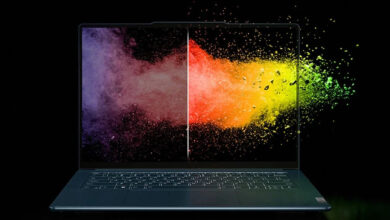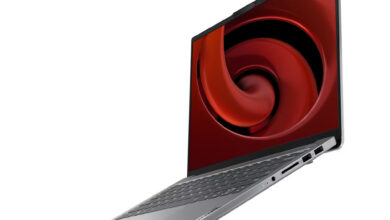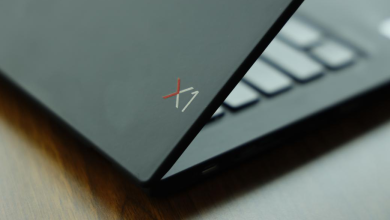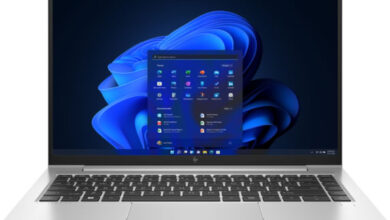When we talk about laptops, Lenovo is one of the most popular names worldwide. The Chinese manufacturer’s ThinkPad has been quite successful. Recently, Lenovo launched the Lenovo ThinkPad X13 Gen 2. The company unveiled the device at the ThinkPad Spring 2021 launch event in Beijing, under the theme “Hello Pioneer.” Lenovo also unveiled the ThinkPad T14 Gen 2 and ThinkPad X1 Yoga Gen 6, and we have published their reviews.
In fact, the company unveiled three new products in the X1 series at the event, each of which brings significant changes. This article reviews the highlights of this laptop in detail. The power supply remains 65W, which supports the PD protocol with the popular USB Type-C port. Unfortunately, the power adapter does not use the same slim design as the X1 series. This is not a big deal for a high-performance laptop.
Specifications
| Screen | 13.3″ WQXGA (2560 x 1600) IPS, anti-glare, 400 nits, LP133WQ1-SPF1 |
| Processor | 11th Generation Intel Core i7-1165G7 Processor with vPro™ (2.8 GHz, up to 4.7 GHz with Turbo Boost, 4 Cores, 8 Threads, 12 MB Cache) |
| TDP | 65W |
| Graphics card | Intel® Iris® Xe Graphics |
| Memory | 16GB LPDDR4X 4266MHz (Soldered) |
| Storage | 512GB PCIe SSD |
| Camera | Optional: Hybrid infrared (IR) / 1080p webcam privacy shutter |
| Ports | 2 x USB-A 3.2 Gen 1 (1 always on), 2 x Thunderbolt 4, HDMI 2.0, Headphone/mic combo, Kensington Nano Security Slot, Smart card reader slot, Nano-SIM slot |
| Battery | 54.7Wh |
| OS | Windows 10 Pro |
| Weight | 1.27kg (without an adapter) |
The Lenovo ThinkPad X13 Gen 2 offers convenience, aesthetics, and comfort. The 16:10 display is further enhanced with ultra-thin bezels, especially the top and bottom bezels.
Lenovo ThinkPad X13 Gen 2 Review: Appearance
The Lenovo ThinkPad X13 Gen 2 is not significantly different from its predecessor, but it has a more premium appearance. The base of the ThinkPad X13 Gen 1 is made of magnesium/aluminum alloy, while the lid is made of plastic. Due to the improved surface texture, the ThinkPad logo substrate has been changed from brushed to polished, and a skin-friendly matte material is used.
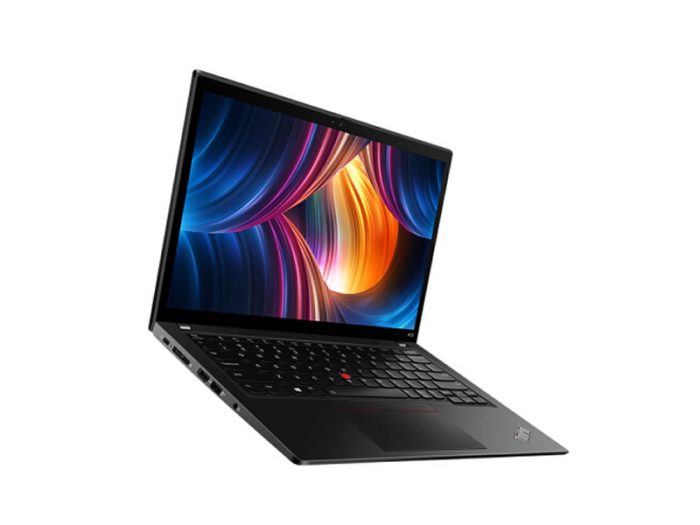
Despite using aluminum and magnesium alloys, Lenovo managed to keep the weight of the device below 1.3 kg (specifically 1.27 kg). This means that it is about 50 grams heavier than the previous generation. Additionally, the thickness has increased from 0.67 inches to 0.7 inches in the last generation. The main reason for the higher thickness is that the new display is thicker. However, the body length and width have been reduced (0.7″ x 12″ x 8.6″, the previous generation is 0.67″ x 12.28″ x 8.55″). This means that there is no difference in the overall portability of the device.
Lenovo ThinkPad X13 Gen 2 Review: Display
The screen of the Lenovo ThinkPad X13 Gen 2 is basically the same as its predecessor. The docking station remains the same, which means that the X13 Gen 2 is compatible with the docking stations of the X13 Gen 1.

It has a 13.3-inch 16:10 display with a resolution of 2560 x 1600. This laptop uses an LG display with model number LP133WQ1-SPF1. It is designed for office users who use Windows.
The screen has a maximum brightness of over 425 nits in SDR mode and the contrast ratio is over 1400:1. In addition, the native Gamma value of 2.55 implies that the native color temperature is very close to the standard 6500 K. Aside from the high native gamma factor and the slightly bluish native white point, the display looks perfect. Thankfully, the hardware sRGB backlit panel is resistant to harmful blue light.
After color correction, the color gamut reaches 101.9% sRGB, which is more than 100% for most displays. It also achieves 70.2% Adobe RGB and 72.2% DCI P3 coverage. The color output for the Lenovo ThinkPad X13 Gen 2 is nearly perfect, whether you consider the sRGB standard, NTSC-C standard, DeltaE value, color temperature, Gamma value, or grey balance. We can safely say that this is one of the best screens that the Lenovo X series has ever used.
Lenovo ThinkPad X13 Gen 2: Connectivity
The Lenovo ThinkPad X13 Gen 2 device has nine ports on each side. On the right side, there are two slots: a USB Type-A 3.2 Gen 1 port and a Kensington Nano security slot.
Most of the ports on this laptop are located on the left side of the laptop. Include two Thunderbolt 4 ports, a mini Ethernet cable connector, an HDMI 2.0 port, a USB Type-A 3.2 Gen 1 port, and a 3.5mm headphone/microphone jack.
There is a card tray on the back for the nanoSIM card. This is an optional smart card slot for business users only. There is also a Rest keyhole at the bottom of the case.
At first glance, the layout and alignment of these ports are still familiar. However, a closer look reveals that there are some changes.
On the left side, there is a switch between the USB Type-A port and the HDMI port. This makes it easier to plug and unplug USB devices when the computer is plugged into an HDMI cable.
However, the TF card reader, which was originally located on the side of the nanoSIM card, has been removed and replaced with the nanoSIM card holder pop-up trigger position. With this change, it means that Lenovo is removing the design it has used for two generations. Lenovo seems to have a soft spot for the X series, making it one of the most advanced and the first to use new ideas. For example, the X series is now the first to use the new 16:10 screen. That’s how important the X series is to the ThinkPad.
To make the new screen ratio more applicable, the company had to lower the chin significantly. The same thickness of the side bezels makes the display more attractive. The top IR camera and ThinkShutter are now standard.
There are two matrix microphone pickup holes on either side of the camera. However, there is no hardware for noise reduction. Therefore, it is recommended that you wear a headset when using it for web conferences.
Lenovo ThinkPad X13 Gen 2: Keyboard
There are also some changes to the keyboard compared to the previous generation. First of all, the fingerprint reader, which is usually located on the knob of the keyboard, is now integrated with the power switch. This makes it much easier to use the fingerprint reader.

The keyboard design, red dot, and keys are all similar to the X1 series design, but the audio socket has been moved from the bottom to the top of the keyboard. In addition, Lenovo makes the keyboard easy to remove. You don’t need to disassemble the entire laptop to replace the keyboard. There are two screws on the bottom of the laptop. Remove them, and the keyboard will be removed.
Unfortunately, the touchpad of the Lenovo ThinkPad X13 Gen 2 is not as good as the X1 series. The left button and the touchpad itself are a bit loose. When you tap or press lightly, it makes a strange sound. However, we would like to believe that this is not the case for all units. This is a problem with the unit we reviewed, probably because it had been disassembled before the review.
Lenovo ThinkPad X13 Gen 2: Hardware
The hardware of the Lenovo ThinkPad X13 Gen 2 is exactly what we would expect. The device comes with an Intel 11th-generation Core i7-1165G7 low-voltage mobile processor. It also has an Intel Core i5-1135G7 model. There are three models in the series.
- 11th Generation Intel® Core™ i5-1135G7 Processor (2.40 GHz, up to 4.20 GHz)
- 11th Generation Intel® Core™ i5-1145G7 Processor with vPro™ (2.60 GHz, up to 4.40 GHz)
- 11th Generation Intel® Core™ i5-1165G7 Processor with vPro™ (2.80 GHz, up to 4.70 GHz)
- 11th Generation Intel® Core™ i7-1185G7 Processor with vPro™ (3.00 GHz, up to 4.80 GHz)
This device comes with Intel Iris Xe graphics and 16GB of RAM. The SSD is the PM9A1 from Samsung, which is a PCI-E 4.0 protocol NVMe drive with capacities ranging from 256GB to 1 TB.
The cooling system has a traditional single eagle wing fan with a single heat pipe design. Apart from the cooling system, we can safely say that the core hardware is technically identical to the ThinkPad X1 Yoga Gen 6.
While we found the cooling system interesting, the noise output is another important aspect to consider. The Eagle Wing fan is still pretty good, at a distance of 20 cm from the air outlet, the noise does not exceed 42 dB. In the keyboard area, the noise does not exceed 38 dB, which is quite good. We can safely say that the level of noise control on this laptop is excellent.
The device supports WiFi 6E connectivity, which is a faster and more efficient version of WiFi. In addition, users can opt for optional 5G features. If the cellular network is available and 5G is active, then the laptop will run with a 5G connection. Additionally, the device supports faster data transfer and connectivity with dual Thunderbolt 4 ports. Another option is WWAN availability, which varies by region. If WWAN is available in your area, ensure that you configure it when you purchase the device.
In addition to the two antennas already installed on the LTE card, there are two additional WWAN antennas. These are relevant for the 5G models.
We can not talk about the hardware without mentioning the battery. The Lenovo ThinkPad X13 Gen 2 uses a 54.7Wh battery from Sunwoda.
The black bar near the back of the body is the audio of the computer. However, it only comes with the Dolby Audio logo.
The sound is still tweaked to emphasize the vocals. In short, the sound isn’t exactly stellar. Users are advised to use headphones for a more immersive sound.
CPU Performance
The laptop is powered by an 11th Gen Intel Core i7-1165G7 processor (2.40 GHz to 4.20 GHz with Turbo Boost, 4 Cores, 8 Threads, 8 MB Cache). According to the GeekBench database, this processor achieved 5,265 points in the multi-core test and 1,516 points in the single-core test. This is significantly higher than the previous generation.
We use PCMark 10 to test its CPU. The total score is stable at around 5,050. Whether we’re using the best performance or average performance, the score fluctuates between 5,000 and 5,100, which is insignificant. For the best performance mode, the score is 5,100, while the average performance mode has a score of 5,000.
On 3DMark Time Spy, this laptop has a maximum score of 1,653, while the lowest score is 1,634
On Fire Strike, the device recorded a highest score of 4,809 and a lowest score of 4,792
On Wild Life, the highest score is 10,668, and the lowest is 10,617, while Wild Life Extreme has a high score of 3,422 and a minimum score of 3,415.
In the Night Raid benchmark, the highest score reached 17,020, while the lowest score was 1,605.
From the scores, we can see that the 3D performance of the Lenovo ThinkPad X13 lags behind that of the X1. However, decoding 4K 4 fps HDR video at a 40Mbps bitrate is stress-free. The hard drive score is also basically the same as the X1.
On the AIDA64 Stress CPU test, the power consumption appears to be quite good. For desktop mode, it can release up to 27.7W at 4.09 GHz, while the “stand mode” can release up to 27.1W at 4.09 GHz.
Instead, the power consumption of all cores is stable above 20W and above 2GHz. This setting enables the X13 to outperform the X1 series while continuing to handle intensive floating-point calculations, resulting in better results than the X1 series.
Battery Life
For the battery life test, we used the PCMark 8 Office scenario setting. To carry out the testing, we turned on the WiFi and adjusted the screen brightness to 50%. The ThinkPad X13 Gen 2 achieved 7 hours and 55 minutes of battery life in “Longer Battery Life” mode. This is about 20 minutes less than the X1 Yoga Gen 6. However, the latter comes with a larger battery, so this is not surprising.
Lenovo ThinkPad X13 Gen 2 Review: Summary
The Lenovo ThinkPad X13 Gen 2 strikes a perfect balance between computing power, mobility, battery life, expandability, design, workmanship, and cost-effectiveness. Looking at the lineup of Lenovo laptops, we can say that the X13 Gen 2 is the ideal tool for office productivity. If you work in operations, marketing, sales, branding, administration, product management, or a similar field, and prefer a small laptop with a budget of around $ 1,200, then the ThinkPad X13 Gen 2 will be your best choice. However, it is important to note that the top model of this laptop can be as expensive as $2,200.
The connectivity and power performance of this laptop make it a powerhouse. The optional gray version includes a gray keyboard and a power button with an integrated fingerprint sensor for quick, one-touch login.
This laptop is powered by 11th-generation Intel Core processors and Iris X graphics processors for ultra-fast performance. Interestingly, it also supports the latest WiFi 6E and industry-leading artificial intelligence for fast connectivity.


